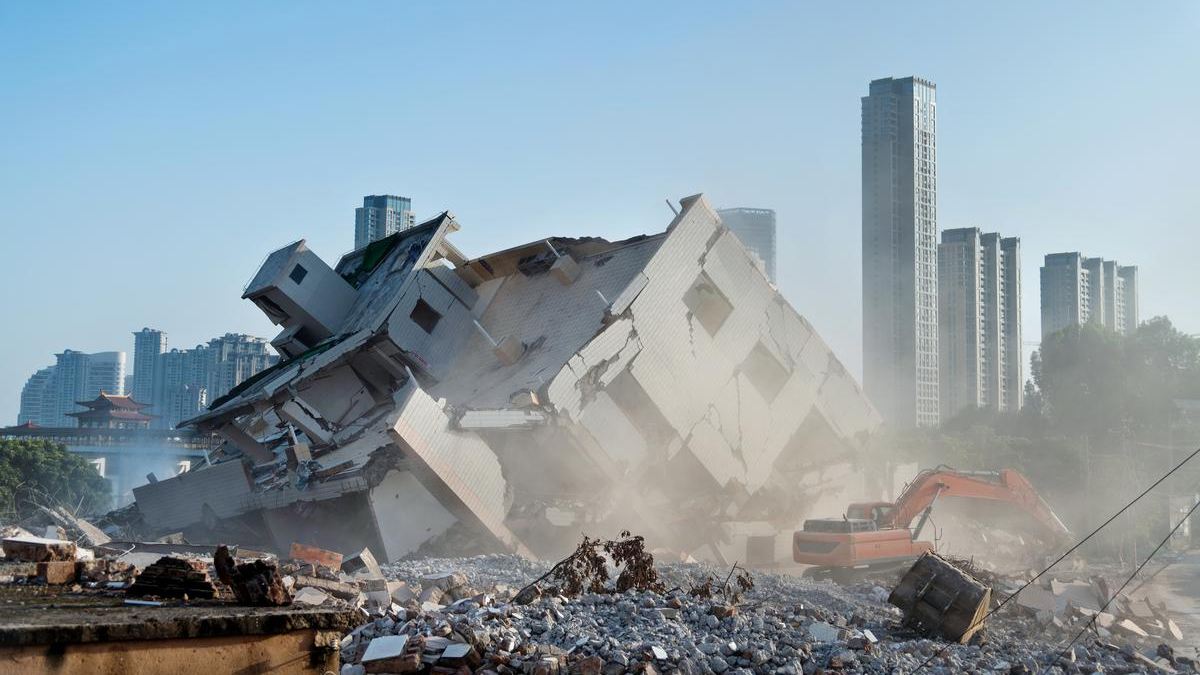
Old buildings/structures have reduced strength in the due course of time. If further use of such weakened structures is continual, it may endanger the lives of the occupants and surrounding occupancy. Appropriate actions need to be applied to improve the performance of structures and restore the desired function of structures. Thus, it is of utmost importance to perform a structural audit of existing buildings and to implement maintenance/ repair work time which will lead to prolonged life of the building and safety of the occupant. A structural Audit is an overall health and performance checkup of a building like a doctor examines a patient.
To evaluate the current condition of structural elements, various Non-Destructive Testing (NDT) methods are employed:
Rebound Hammer Test:
It is often necessary to test concrete structures after the concrete has hardened to determine whether the structure is suitable for its proposed use. Such testing should ideally be done without damaging the structure. Rebound hammer is used for compressive strength of concrete (as per IS-13311(Part-2)/92).
Rebound hammer consists of a spring-loaded steel hammer that when released strikes a steel plunger in contact with the concrete surface.
Ultrasonic Pulse Velocity Test:
This test is done to assess the quality of concrete by ultrasonic pulse velocity method as per IS: 13311 (Part 1) –1992. The underlying principle of this test is –The method consists of measuring the time of travel of an ultrasonic pulse passing through the concrete being tested. Comparatively higher velocity is obtained when concrete quality is good in terms of density, uniformity, homogeneity etc.
Core Test:
Core tests involve taking the actual core samples from the structure using the diamond core cutting bits and subjecting the cores to compressive loading in the Compression Testing Machines, followed by the visual inspection.
Core tests are conducted in conformance with the guidelines laid out in IS: 456.
Half Cell Test:
The instrument measures the potential and the electrical resistance between the reinforcement and the surface to evaluate the corrosion activity as well as the actual condition of the cover layer during testing. The electrical activity of the steel reinforcement and the concrete leads them to be considered as one half of weak battery cell with the steel acting as one electrode and the concrete as the electrolyte. The electrical potential of a point on the surface of steel reinforcing bar can be measured comparing its potential with that of copper –copper sulphate reference electrode on the surface.
Carbonation Test:
The method of testing consists of determining the depth of the carbonated layer on the surface of hardened concrete by means of an indicator.
Carbonation of concrete occurs when the carbon dioxide, in the atmosphere in the presence of moisture, reacts with hydrated cement minerals to produce carbonates, e.g. calcium carbonate. The carbonation process is also called depassivation. Carbonation penetrates below the exposed surface of concrete extremely slowly. If the entire concrete covering the reinforcing steel is carbonated, corrosion of the steel would occur if moisture and oxygen could reach the steel.
RCC Scanning:
When is reinforcement location needed?
During construction assessment or retrofitting it is required to determine the load capacity of old reinforced concrete structures and the original plans are not available. In this case, there are a lot of uncertainties about the concrete reinforcing steel amount, rebar diameter, depth and orientation.
Cover Meter Test:
Concrete cover provides the protection to the Reinforcement bars against corrosion. It thus becomes essential that there should always be a cover of suitable depth existing between the surface and first layer of reinforcement. Cover meter detects the cover depth using the pulse induction technique.
Cover meter can also be used to estimate the depth, size and spacing between the reinforcement bars.
Crack Depth Measurement:
The Crack Depth is calculated by using the principle of acoustic diffraction of ultrasound waves. The method uses a specially designed test instrument where the transducers are positioned on the surface in a line across the crack. The average depth of crack is calculated by measuring the transit time at different distances of transducers from the crack, viz at 100mm, 150mm and 20mm.
Unlock your potential with A To Z NDT Training Academy, your premier civil NDT training institute in Delhi NCR. Join us today to build a successful career – where excellence meets opportunity!
Copyright © 2023 | All Rights Reserved | Designed & Promoted by STS Digital Solutions